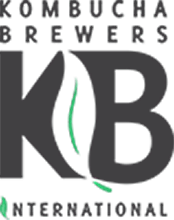Kombucha tea beverage: Microbiological characteristic, antioxidant activity, and phytochemical composition
Authors:
Eva Ivanisova, Krist?na Menhartova, Margarita Terentjeva, Lucia Godocikova, J. Arvay, Miroslava Kacaniova
Abstract:
The aim of the present study was to determine the microbial composition, antioxidant activity, and content of phytochemicals in prepared kombucha tea beverage. Microbiota was identified by MALDI-TOF mass spectrometry, antioxidant activity of beverage was tested by ABTS and phosphomolybdenum method, the total content of phytochemicals (polyphenols, flavonoids, and phenolic acids) was measured by colorimetric methods. The major phenolic acids, flavonoids, and methylxanthines were detected by high performance liquid chromatography (HPLC). Candida krusei, Sphingomonas melonis, Sphingomonas aquatilis, Brevibacillus centrosporus, and Gluconobacter oxydans were the most abundant microorganisms. Antioxidant activity of kombucha tested by ABTS and phosphomolybdenum method was 1.16 mg TEAC/ml and 2.04 mg TEAC/ml, respectively, which values were higher than in black tea 0.67 and 0.81 mg TEAC/ml, respectively. Also, content of total polyphenols (0.42 mg GAE/ ml), flavonoids (0.13 mg QE/ml), and phenolic acids (0.19 mg CAE/ml) was higher in kombucha than in black tea (0.18 mg GAE/ml; 0.02 mg QE/ml; 0.05 mg CAE/ml, respectively). Gallic, chlorogenic, syringic, and protocatechuic acids, and rutin and vitexin from flavonoids were dominant in kombucha beverage detected by HPLC. A great difference in caffeine contents, 217.81 g ml1 (black tea) and 100.72 g ml?1 (kombucha beverage), was observed. The amounts of theobromine were similar in black tea and kombucha, but theophylline was detected only in black tea in trace amount (0.52 g ml1).
Keywords: black tea, tea fungus, flavonoids, phenolic acids, methylxanthines
Country: Slovakia
Citation: Acta Alimentaria, 48 (3). pp. 324-331. ISSN 0139-3006 (print); 1588-2535 (online)
Date Updated: January 20, 2021
 0 people like this study.
0 people like this study.